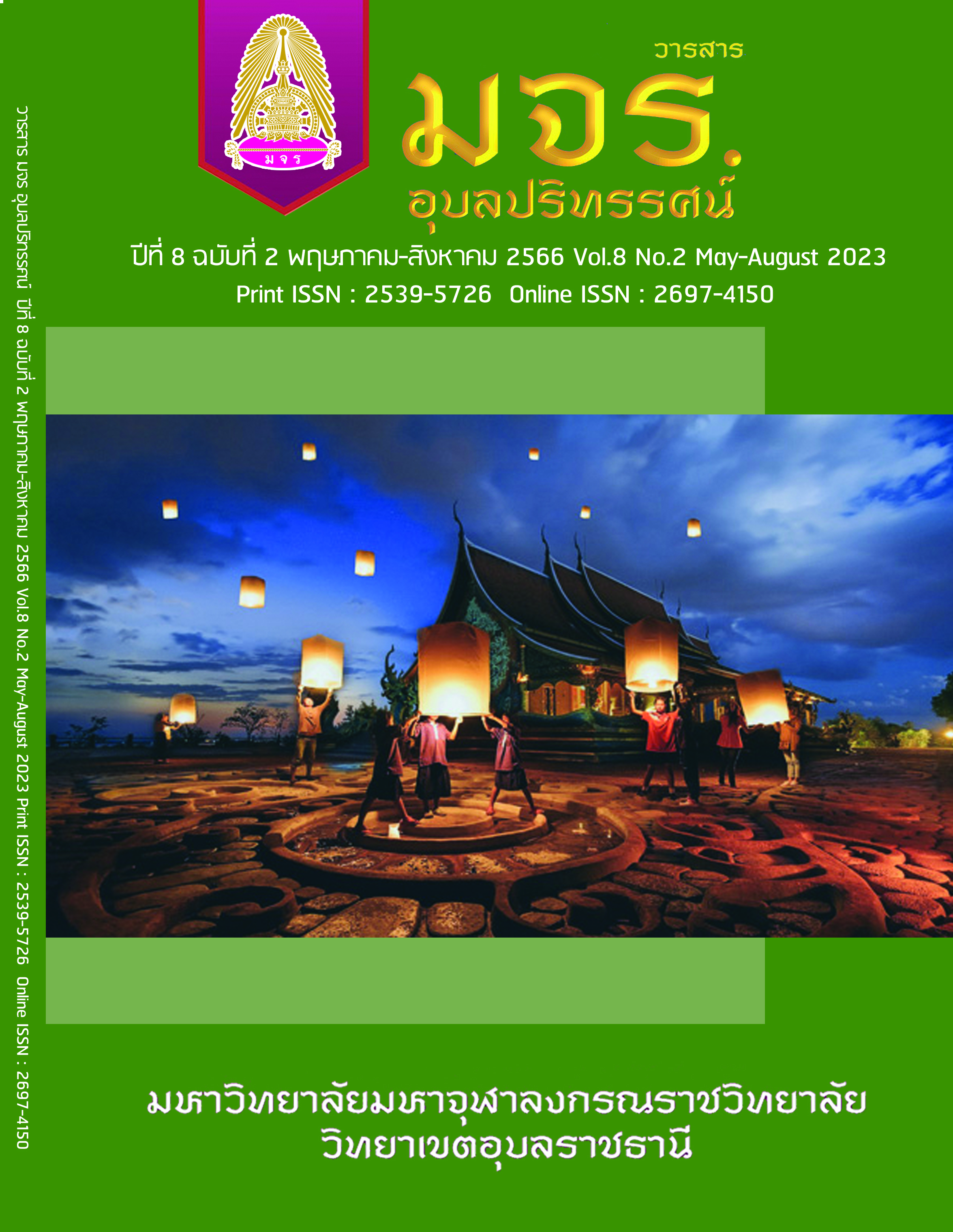ANALYTICAL THINKING SKILLS DEVELOPMENT THROUGH THE PUCSC MODEL OF INSTRUCTION AND AUTHENTIC MATERIALS FOR 6th GRADE STUDENTS
Main Article Content
Abstract
The purposes of this research were to (1)create teaching and learning activities plans to develop analytical thinking skills through the PUCSC model of instruction and authentic materials. (2)examine the results of developing analytical thinking skills through the PUCSC model of instruction and authentic materials, and (3)examine the students' satisfaction toward teaching and learning activities that used the PUCSC model of instruction and authentic materials for the students in grade 6 of the first semester of the 2023 academic year at Wat Ngiwrai School. This research is quasi-experimental with a one-group pretest-posttest design. The research instruments consisted of (1) lesson plans (2) lesson plan assessment forms (3)multiple-choice analytical thinking skills pre- and post-tests and (4) satisfaction assessment forms. The obtained data were analyzed using mean, standard deviation, item-objective congruence index, and relative gain score. The research findings were as follows: (1) the results of creating teaching and learning activity plans to develop analytical thinking skills through the PUCSC model of instruction and authentic materials found that all learning activity plans were at highest level. (2) the average analytical thinking skills scores of the students after studying in the experimental class that used the PUCSC model of instruction and authentic materials were (X̅= 22.55) higher than before studying in the experimental class (X̅= 16.65) and the relative gain score of the students was in the middle level, with an average score of 44.19. (3) the student’s satisfaction with teaching and learning activities was satisfied with teaching and learning activities. Overall, the result was at a high level, with an average score (X̅=4.44)
Article Details
References
กระทรวงศึกษาธิการ. (2551). หลักสูตรแกนกลางการศึกษาขั้นพื้นฐานพุทธศักราช 2551. กรุงเทพฯ: คุรุสภา.
เคน จันทร์วงษ์. (2561). การพัฒนารูปแบบการจัดการเรียนรู้ที่เสริมสร้างความสามารถในการคิดอย่างมีวิจารณญาณและผลสัมฤทธิ์ทางการเรียนของนักเรียนระดับชั้นมัธยมศึกษาตอนปลาย. บัณฑิตวิทยาลัย : สถาบันเทคโนโลยีพระจอมเกล้าเจ้าคุณทหารลาดกระบัง.
ดารารัตน์ มากมีทรัพย์. (2553). การศึกษาผลการคิดอย่างมีวิจารณญาณและผลสัมฤทธิ์ทางการเรียนด้วยการเรียนแบบผสมผสานโดยใช้กระบวนการแก้ปัญหา วิชาการเลือกและการใช้สื่อการเรียนการสอนของนักศึกษาระดับปริญญาตรี. บัณฑิตวิทยาลัย : มหาวิทยาลัยศิลปากร.
บวรสวรรค์ มุ้งทอง. (2561). การใช้สื่อสภาพจริงส่งเสริมความสามารถในการอ่าน ภาษาอังกฤษและแรงจูงใจในการเรียนของนักเรียนชั้นมัธยมศึกษาปีที่ 3 โรงเรียนวัดดอนจั่น จังหวัดเชียงใหม่. บัณฑิตวิทยาลัย : มหาวิทยาลัยเชียงใหม่.
รมินตรา วรงค์ปกรณ์. (2559). การใช้สื่อสภาพจริงเพื่อพัฒนาความสามารถในการอ่านและการเขียนของนักเรียนชั้นมัธยมศึกษาปีที่ 3. บัณฑิตวิทยาลัย : มหาวิทยาลัยราชภัฏเชียงใหม่.
โรงเรียนวัดงิ้วราย. (2565). รายงานผลสัมฤทธิ์ทางการเรียนโรงเรียนวัดงิ้วราย. อ่างทอง: กลุ่มงานวิชาการ
สำนักงานเขตพื้นที่การศึกษาประถมศึกษาอ่างทอง. (2565). รายงานการประเมินคุณภาพการศึกษาผลการทดสอบ O-Net. อ่างทอง: กลุ่มงานวัดและประเมินผลการศึกษา
Ahellal, M. (1990). “Using Authentic Materials in the Classroom : Theoretical Assumptions And Practical Consideration”. English Teaching Forum, 28(2): 37-39.
Guo, S. (2012). Using authentic materials for extensive reading to promote English proficiency. English Language Teaching. Retrieved from http://www.ccsenet.orgJoumal/index.php/elt/article.
Landsford L. (2014). Authentic materials in the classroom: the advantage. Retrieved from http://www.cambridge.org/elt/blog/authentic-materials-classroom-advantages.
Matinez, A. G. (2002). Authentic materials: An overview. Retrieved from http://www3.telus.net/linguistics issues/authenticmaterials.html.

